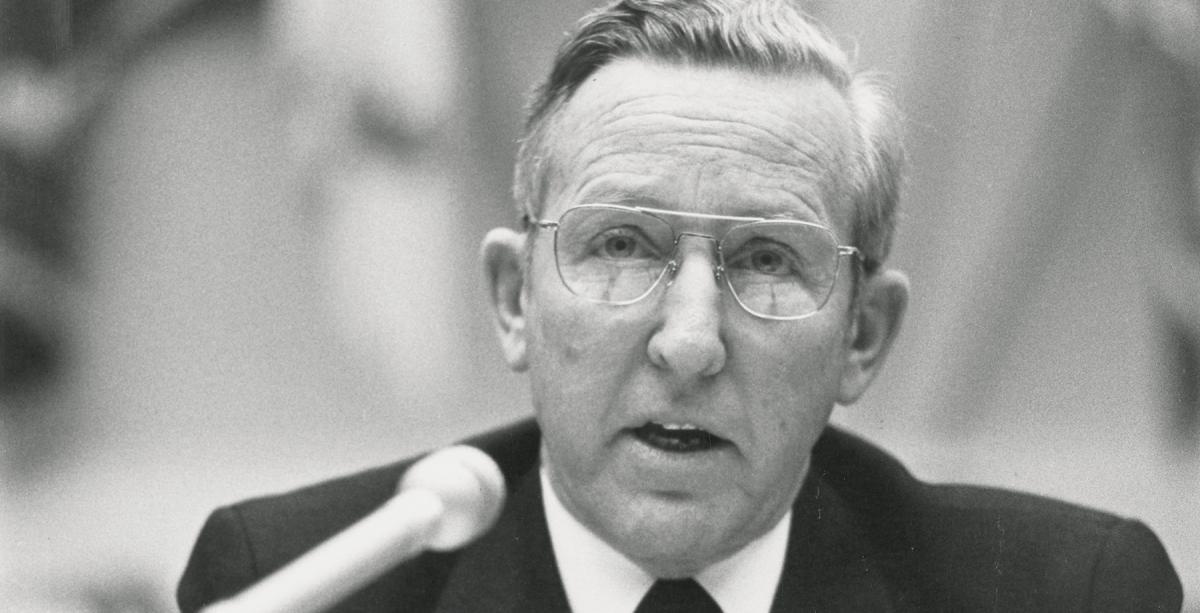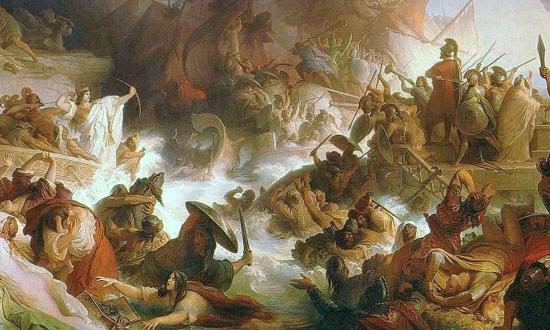While attending a celebratory function on the U.S. Naval Institute’s Midway Terrace, I had the opportunity to meet an engagingly friendly and quietly impressive former Chief of Naval Operations (CNO). He was not the only dignitary at that event, but he stood out to me because he had been CNO while I was on active duty and had mattered a great deal to me.
It was a very dark time in our Navy’s history when Thomas B. Hayward took the helm as CNO. The Navy of the late 1970s was still reeling from the fall of Vietnam, the OPEC oil embargo, and a thing called “stagflation.” The Soviet Navy was still an ongoing—and growing—threat, Iran was in the throes of the revolution that would bring a new menace onto the world stage, and the Soviets were preparing to invade Afghanistan.
For me, it was a depressing time because the Navy in which I served was facing multiple challenges and crises, including inadequate recruiting and retention, insufficient funding, sagging morale, and being described by the Chairman of the Joint Chiefs of Staff as “a hollow force.” Of all the many trials confronting the new CNO, drug abuse stood out for me. Because others had chosen to go down that unfathomable path, I had suffered the indignity of having to give a urine sample under very close scrutiny before I could board the plane to come home from Vietnam. I was heartsick at the frequent descriptions of Vietnam veterans as drug abusers, and I worried about the Navy’s state of readiness when it was clear these errant souls were among us.
I will never forget the day I watched a video in which Admiral Hayward, with obvious and contagious conviction, addressed the drug abuse problem with the stern but uplifting declaration, “Not in my Navy!” It was a true turning point. Coupled with his “Pride in the Navy” campaign, the service began the resolute climb out of the doldrums of despair and back to a Navy worthy of our service and equal to the demands of safeguarding the nation.
Tom Hayward did so much more as CNO and during his career leading up to that exalted position. Graduating from the U.S. Naval Academy in 1947, he subsequently earned his wings and joined the Screaming Eagles of Fighter Squadron 51 (VF-51) embarked in the USS Essex (CV-9) and then the Valley Forge (CVA-45), flying 146 combat missions over North Korea and being awarded a Distinguished Flying Cross and an array of other medals. On one harrowing mission, his Panther fighter was hit by enemy flak, forcing him to make a wheels-up crash landing in South Korea.
After the Korean armistice, he became a test pilot, which—as pointed out by Rear Admiral Samuel Cox in his wonderful tribute to Hayward in the Winter 2022 issue of Pull Together—“was statistically more dangerous than combat” in those early days of jet aviation. Follow-on assignments included a multitude of squadrons and a variety of aircraft—Cougars, Cutlasses, Skyrays, Crusaders, and Phantom IIs, to name a few.
In 1965, he assumed command of Carrier Air Group Ten (soon redesignated Carrier Air Wing Ten) and returned to combat embarked in the USS Intrepid (CV-11), flying 36 combat missions from Dixie Station off South Vietnam and Yankee Station off North Vietnam. The recipient of a Legion of Merit with Combat V and other decorations, Commander Hayward and his other pilots were confronted by a Russian- and Chinese-supplied defense network that bristled with antiaircraft guns and missiles and included MiG-17s and MiG-21s.
Ashore for a time, then-Captain Hayward attended the National War College and earned a master of science degree from George Washington University before returning to sea in command of the USS Graffias (AF-29) and then the attack carrier America (CVA-66), in which he once again returned to the war in Vietnam for extended operations.
Not surprisingly, he was promoted to rear admiral in 1971 and then added more stars in various important assignments—including Commander, Seventh Fleet, and Commander-in-Chief, U.S. Pacific Fleet—before becoming the 21st Chief of Naval Operations in July 1978. When he retired in 1982, he had succeeded in leaving the Navy much better off by initiating critical building programs, improving pay and benefits for Navy personnel, and improving morale—mine included!
When Hayward was serving in those early days of the Korean War, the Navy granted author James Michener permission to closely observe operations by VF-51 and the other squadrons of Air Group Five. Michener went on to write The Bridges at Toko-Ri, a true classic of naval literature (and cinematography). At the end of the story, in one of those perfect literary moments, the fictional Admiral Tarrant watches a morning launch, “two by two, from the lashing catapult, planes of immortal beauty whipping into the air with flame and fury upon them.” Michener may well have been thinking of Lieutenant (junior grade) Tom Hayward when Tarrant, marveling at the pilots who “leave this tiny ship and fly against the enemy . . . then must seek the ship, lost somewhere on the sea . . . and land upon its pitching deck,” wistfully asks, “Where do we get such men?” Indeed.






